Have you ever seen a lop-eared bunny? There's no way you can walk past such a ball of cuteness without stopping for a few pets. The ears of lop-eared rabbits are their main attraction, but don't count out their personalities just yet!
There are many types of lop-eared rabbits. ARBA recognizes 5 of them, but you can say there are 14 or more droopy-eared breeds in total. They can be distinguished from one another by looking at ear size and shape.
Let's take a look at the different lop-eared breeds and how to care for them.

Breed names: Holland Lop, French Lop, English Lop, American Fuzzy Lop, Lop-eared Lionhead, German Lop, Cashmere lop eared rabbit, Plush Lop, Velveteen Lop, Miniature Cashmere Lop, Meisner Lop, Dwarf Lop, Mini Lop, Minature lop-eared rabbits
[wptb id=718]
Lop-eared rabbits are rabbit breeds that have ears that droop down rather than sit up straight. This feature makes them very popular among rabbit owners because they appear to be cuter than other rabbits.
This is why most people looking for pet bunnies pick these cute critters. Unfortunately, not many people realize how much work lop-eared rabbits are until it's too late. They require special attention especially if you have a breed with very long ear tips.
Long ear tips will usually get soaked in water when they drink. Dry them on cold night! Wet ear tips on cold nights can cause infections of the ear canal and other health issues.
You will also need to consider your rabbit's environmental needs. Rabbits with long ears may need a smooth, soft floor to jump on and lots of space to move around.
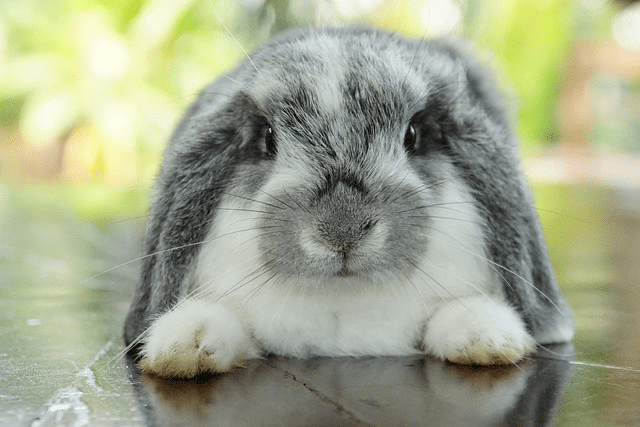
The lop rabbit is not only cute because it has characteristic lopped ear tips, but it also has personality to spare. These rabbits make excellent pets and are extremely sweet. Its friendly and loving nature adds to its appeal.
Depending on the breed, lop-eared rabbits can get quite big. The largest of the lop bunnies are the French lop-eared rabbits. These beauties can get up to 5.9kg (13Ib). You also get very small lop-eared hoppers. These usually only weigh around 0.9-1.8kg (2-4Ib).
These beautiful rabbits have a lifespan of around 5-14 years. This can differ between breeds. The size of the breed plays a huge role.

Lop-eared rabbit breeds are especially famous due to their looks. People love their long, hanging ears and cute button noses. If you like being very involved with your pets, then this bunny is perfect for you.
They need a lot of attention and care. Their somewhat quiet, yet friendly temperaments make them popular house bunnies. They are costly, however, due to their numerous health concerns mostly caused by their adorable floppy ears.
If you like grooming and checking your pet for issues regularly, then you'll adore a lop rabbit.
Lop-eared rabbits are often plagued by ear infections and dental issues. The fact that the ear tips on these bunnies hang down, creates the perfect breeding ground for bacteria.
The hanging ear shells restrict airflow in the ear channels. In breeds with very long ears, you'll find that they get very dirty from dragging on the ground. Lop bunny breeds are also very susceptible to ear mites.
It's best to check daily and take your rabbit to the vet immediately if you notice any problems.

The best diet for a lop rabbit includes around 80% grass hay, fresh vegetables, leafy greens, a small amount of fruits, and healthy rabbit pellets without any grains, corn, and colorful pieces.
In my experience, I've found that feeding unlimited grass hay is best. They can't eat too much dried grass. Limit the veggies and leafy greens to two to three kinds per day and feed fruits only once or twice a week. For the pellets, it's best to follow the instructions on the packet.
The diet of lops is very similar to other bunny breeds. If you want to know more about how to feed your rabbit a healthy diet, go to our article on rabbit feed.
Are you wondering which bunnies are classified as lop-eared rabbit breeds? You'll be surprised at how many there are. Let's take a closer look.
The American fuzzy lop-eared rabbit breed is very similar in appearance to the Holland lop. The main difference between these breeds is the coat. American fuzzy lops have wool similar to their Angora cousins while the Holland lop has a thick fur coat.
If you want to show your American fuzzy lop-eared rabbit, you need to make sure it weighs at least 1.8 kilograms (4Ib).
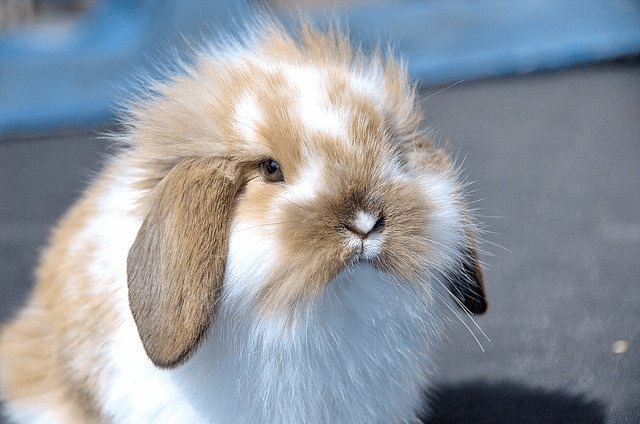
A miniature lop-eared rabbit is one of those breeds that are easily confused with others, especially Mini lops. The Miniature lop and Mini lop aren't the same breeds even though they look very similar.
The Miniature lop, accepted by the BRC is often called a Mini lop for short. It is, however, very different from the Mini lops accepted by the American Rabbit Breeders Association (ARBA). In fact, the Miniature lop is most similar to the ARBA accepted Holland lop.
The Miniature lop-eared rabbit has a very small head. This can affect jaw alignment and cause malocclusion (misaligned teeth). Bunnies that suffer from misaligned teeth often have overgrown teeth that need to be tended to by a vet on a regular basis.
The French lop-eared rabbit is an amazingly large rabbit breed that has been created by breeding both English lop-eared and Flemish Giant breeds together.
This French lop bunny became famous in Britain in the 1960s, and in the United States in the 1970s. French lops typically weigh between 4.5 to 6.8 kilos(10-15Ib).
They are well known for their friendly personalities and love of affection. This makes the French lop the perfect pet. Due to their size, however, French Lops need lots of room to just be bunnies.
English lops were the first lop-eared rabbits ever bred by humans and are believed to be one of the oldest rabbit breeds in existence. These stunning lop bunnies are known for their distinctively long lop ears.
English lop ear rabbits have ear shells up to 33 cm (13 inches) long. Weighing between 4-6.8 kilos(9-15Ib), English lop-eared rabbits are one of the larger lop breeds available. Make sure you have a large hutch for the English lop breed so it doesn't stand on its ear tips.
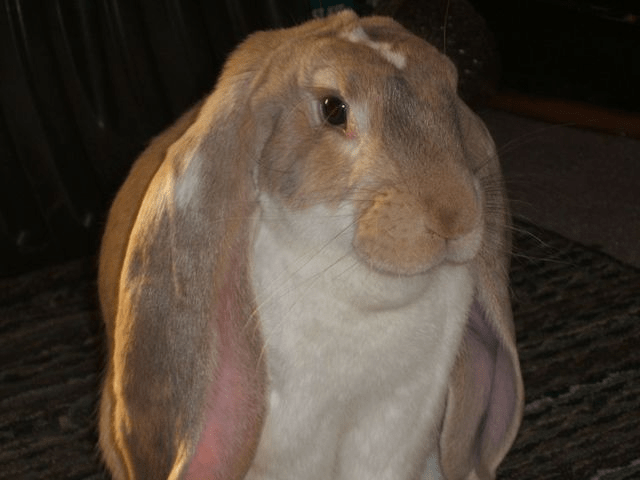
By Bassetluv at English Wikipedia, CC BY-SA 3.0
Holland lops are a very popular breed of rabbit. This lop-eared rabbit breed has a tiny body similar to Netherland dwarfs but with hanging ear tips and deep shoulders. They are extremely cute and very friendly which makes them wonderful pets.
Holland lops can be expected to have a maximum weight of 1.8kg (4Ib). The Holland lop-eared rabbit was created by breeding Netherland dwarfs to French lops. For Holland lops, their earlobes are their most distinctive feature.
The tiny breed of Cashmere lop is very similar to the standard Cashmere rabbit breed. The only real difference between these breeds of lop-eared rabbits is their sizes.
The Cashmere lop is a popular breed, especially as a house pet. They have beautiful, thick coats with long silky soft fur.
The Dwarf Lop is a lop-eared rabbit that can weigh up to 2.5kg (5.5 Ib) and is commonly known as the Mini Lop even though it's a completely different lop rabbit according to the BRC. The main difference between Mini lops and Dwarf lops is their size. Mini lops have a maximum weight of around 1.6kg (3.5Ib).
Although not as small as others of the lop-eared family, Dwarf lops are much smaller than most other lop breeds. This lop-eared rabbit breed is known for being exceptionally playful with a very docile nature. For this reason, they are excellent house pets.
This stunning bunny looks a bit different from other rabbit breeds. Its loped earlobes along with its lion-like main make this lop-eared breed truly unique.
Along with its striking look, it's also a very small breed weighing only 1.6 kilograms (3.5Ib) when fully grown. You'll also be awed by this breed's incredibly soft fur.
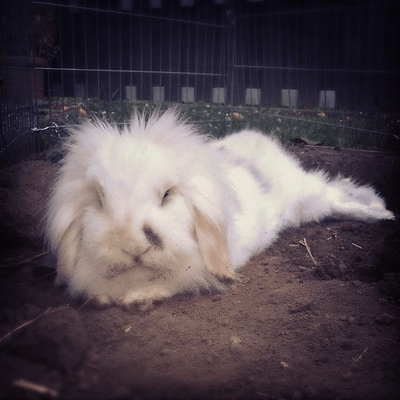
The Meisner lops aren't as well known as other rabbit breeds. This bunny is very similar to the French lops but has a more slender build.
Due to being a fairly new breed, it's currently quite rare. For this reason, the BRC added the Meismer as a member of its "Rare Varieties Club"
The German lopped ear is a chunky rabbit with a very muscular frame. Oar lop ears (ear shells hang to the side over the shoulders) and horn lop ears (the ear shells hang forward over the eyes) are not accepted in this breed.
You can expect to see this bunny with short to medium-length fur in a variety of colors and patterns.
Other lop-eared rabbit breeds that are not yet accepted by the BRC or ARBA include the Velveteen lops and Plush lops.
How much you'll initially pay for your bunny will depend on if you adopt, buy from a pet store, or a breeder. For adoption, you can expect to pay anything between 5-20 dollars for a rabbit.
It's best to avoid a pet shop completely. These rabbits are usually sickly and come from backyard breeders that don't care for their pets.
The best chance for a healthy bunny, however, is to buy from a reputable breeder. They take their rabbit's health seriously and always try to improve the breed.
The price of your new bunny will also differ depending on the breed you choose. Rare lop-eared rabbit breeds can cost as much as $1000 or more! Any bunnies with champion bloodlines will also be a lot more expensive than those rated as pet quality, just like in purebred dogs.
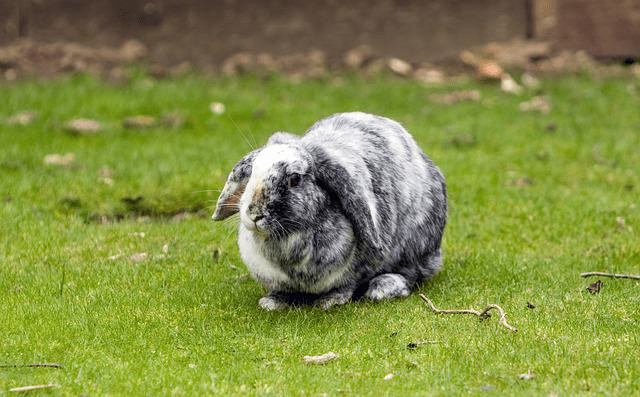
Bunnies are known to produce anything between 1 and 18 kits per litter. The average, however, is about 6 per litter. The size of your lops will also play a role in litter size. A dwarf rabbit, for instance, will have a smaller litter than a giant rabbit.
Yet again size will play a role in breeding age. Dwarf breeds like the Holland lops need to be around 4 months old to breed for the first time. Giant breeds like the English lops on the other hand need to be 6 months or older before they are bred.
At this stage, it is unknown if lop ears are a dominant or recessive trait. This trait was created by selective breeding and not by natural selection, however.

Giant lops can weigh up to 6.8 kg (15 Ib). The largest of the lops is the French lop.
Dwarf lops are small bunnies that weigh up to 2.5kg (5.5Ib). They are much larger than Holland lops and other miniature breeds.
The docile nature of most of these bunnies makes them excellent pets. If handled correctly, they won't mind being helped from time to time. Some might even seek out the contact.
The floppy nature of a rabbit's ears is caused by genetics. Rabbit ears are held up by three sets of cartilage that lock together. In a bunny with ears that flop, there is a gap between two of these cartilage sets which causes a weak spot and thus drooping ears.
Mini Lops love snuggling and are very affectionate. For this reason, they are great pets for those who want a cuddly bunny.
Droopy ear bunnies are more susceptible to health problems such as ear infections and dental issues. A lot of them have small heads. This causes the rabbit's nose to be short which increases the chances of detail issues.
5-8 years. Just like dogs, large rabbit breeds have a shorter lifespan than miniature breeds.
French lops make excellent pets. They are calm, affectionate, and large enough to not be threatened by the household cat.
Dwarf breeds are usually more active than their giant counterparts. Despite their need to run and jump, they are very affectionate and love to cuddle.
8-14 years. Dwarfs generally live longer than giant rabbit breeds.
